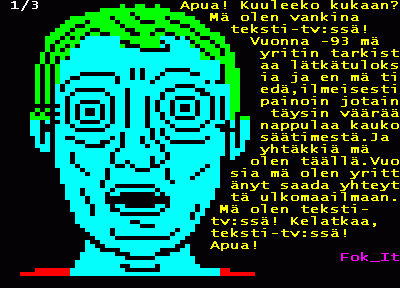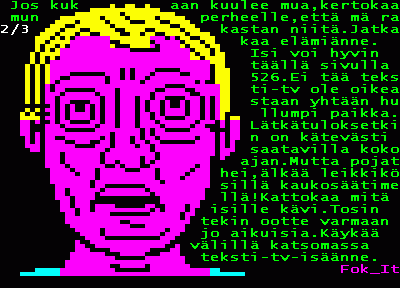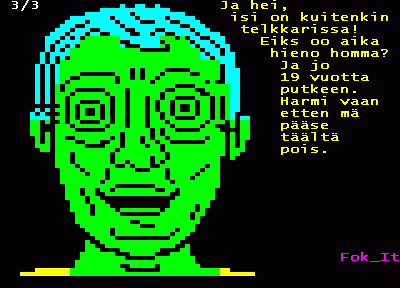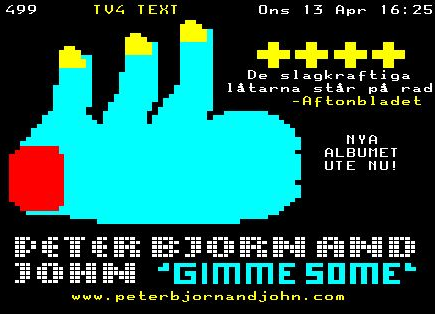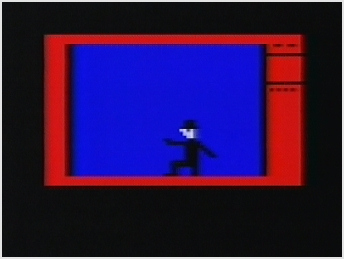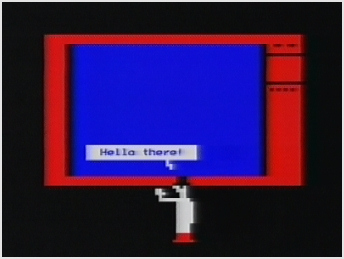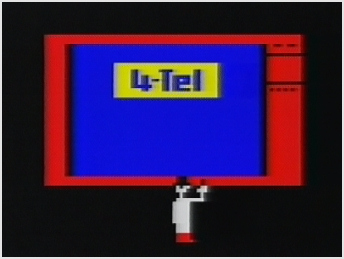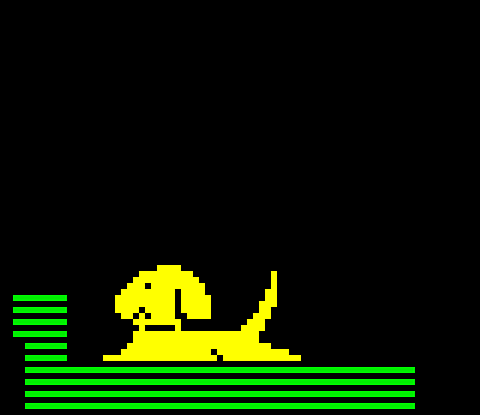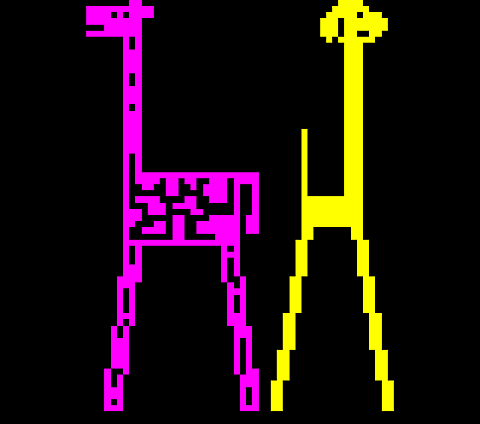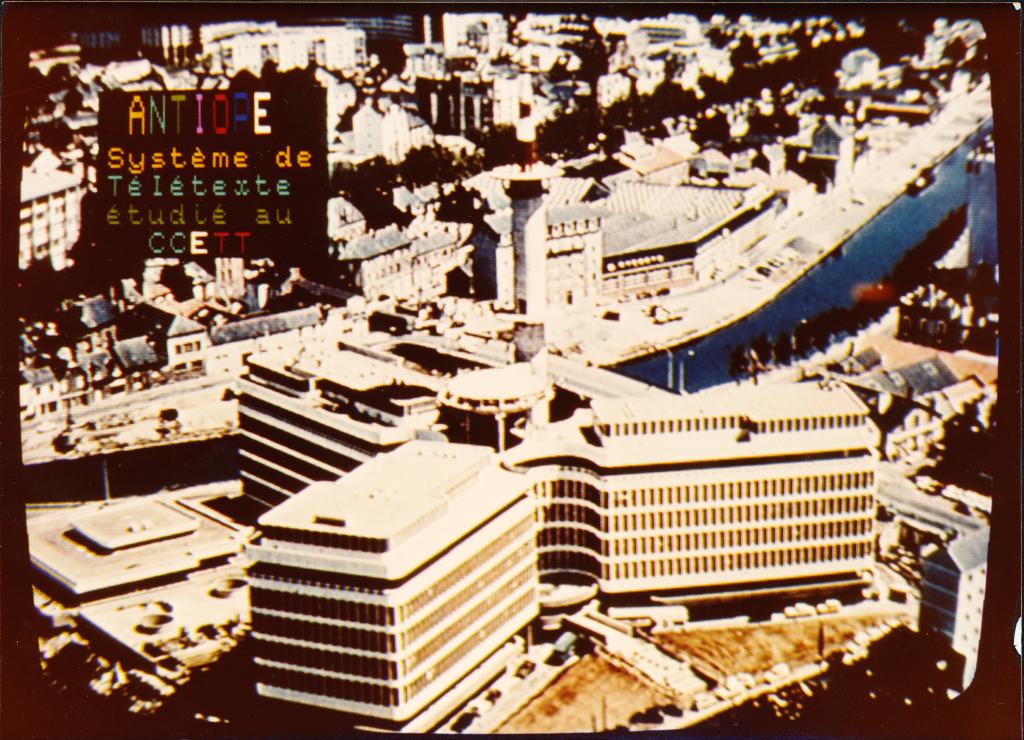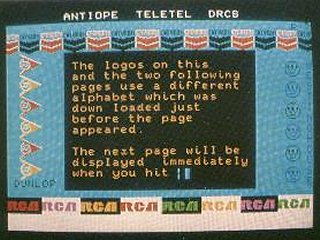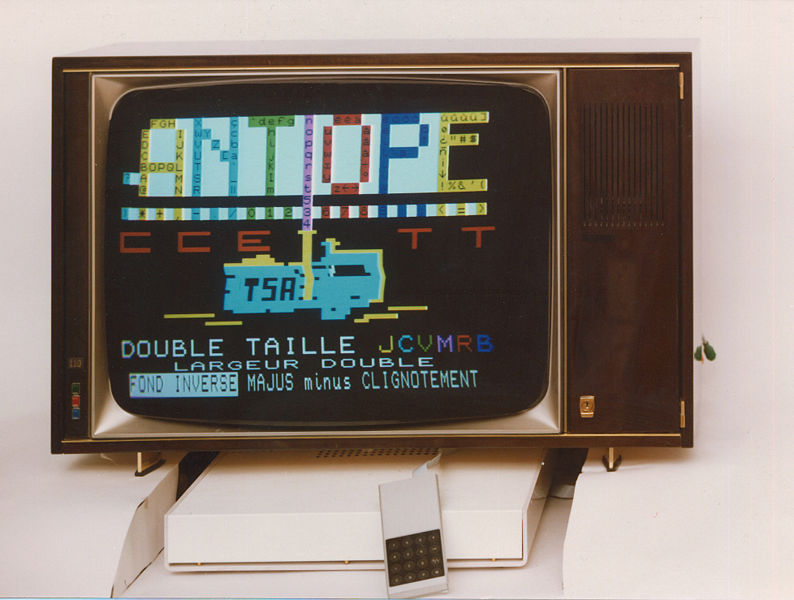A teletext game for the BBC Micro called Flowers of Crystal (1984). Great intro!
Tag Archives: teletext
This guy was sucked into teletext when he was looking for hockey results in 1993. Now he is trying to communicate with his children, who are grown up by now. By Joonas Rinta-Kanto, as part of his fok_it comic.
This appeared on Finnish teletext yesterday. If you’re TV is not cool enough for YLE, you can watch the pages online here. Press the alasivu buttons to change subpages.
(via Aleksi Eeben)
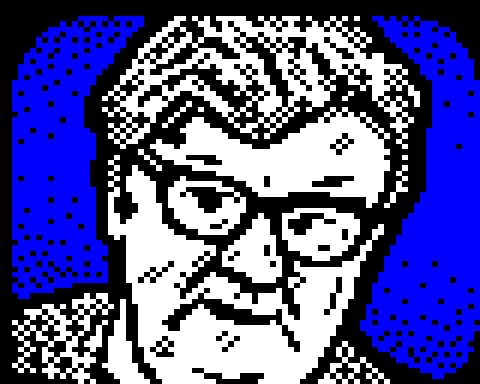
RIP Colin McIntyre, founding editor of Ceefax.
When Ceefax was launched in 1974, he updated all 24 news pages on his own, feeding punch tape into machines.
When he retired in 1982, Ceefax had a 20-strong team. It went on to attract 22 million viewers a week and inspired teletext services around Europe.
— BBC News
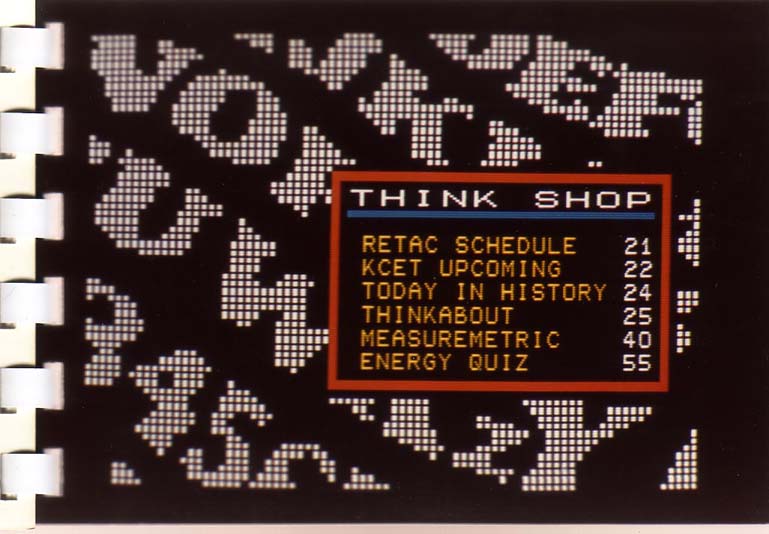
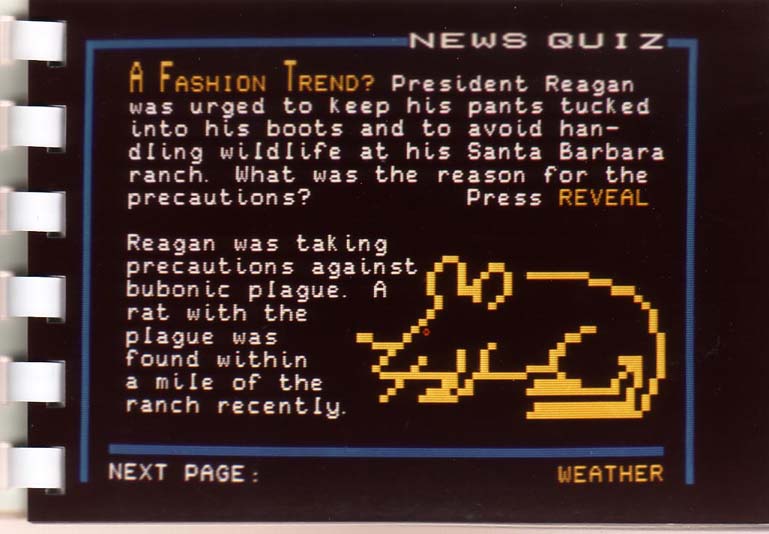

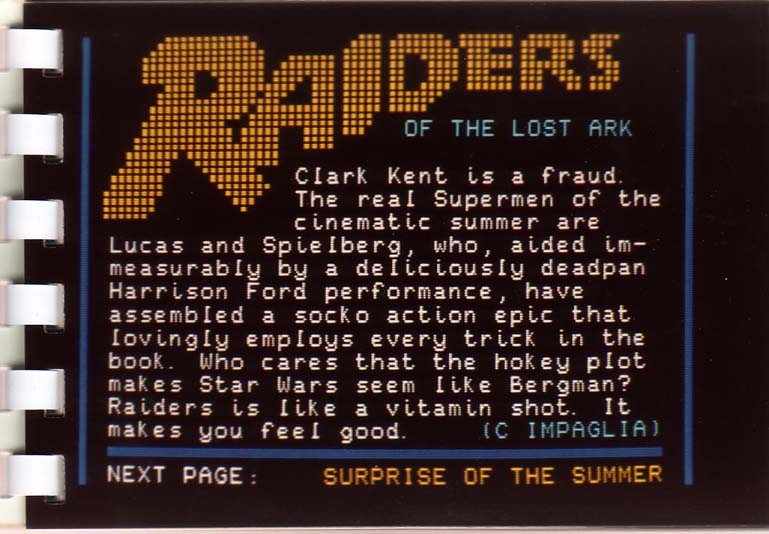
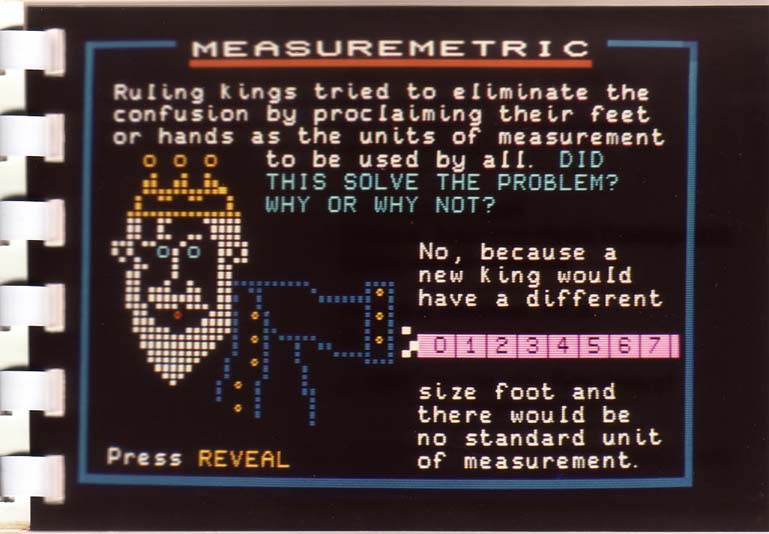
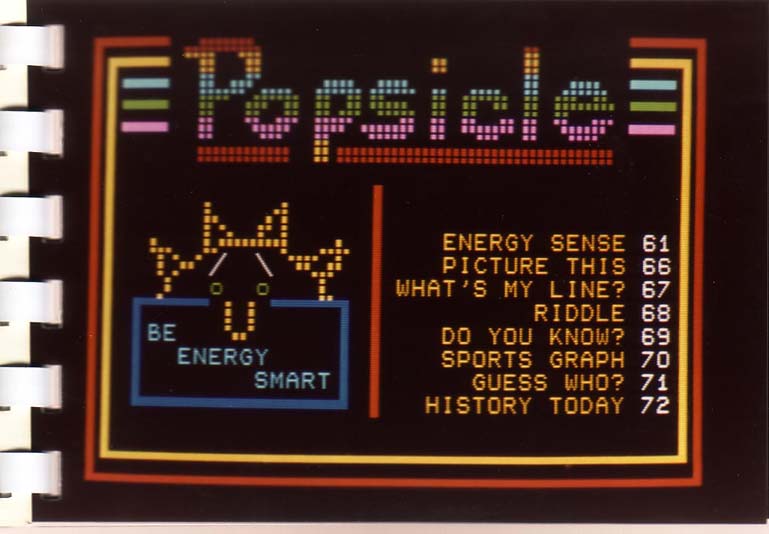
Teletext graphics by Richard Gingras, 1980. This service was called Now and ran on KCET-TV. It was part of a collaboration between CBS, NBC and PBS to test the French Antiope standard for teletext. The project was supported by Télédiffusion de France.
Images from Gingras’ website, which is only partly archived on archive.org. There’s an interview with Gingras about his teletext work here.
Post updated 2024.
A day of a lonely dog by the Japanese artist Maki Ueda, 2000. Shown in a teletext exhibition on the Dutch channel NPS, also featuring works by Edwin van der Heide, JODI, Joost Rekveld and Wolf.
Post updated in 2024.
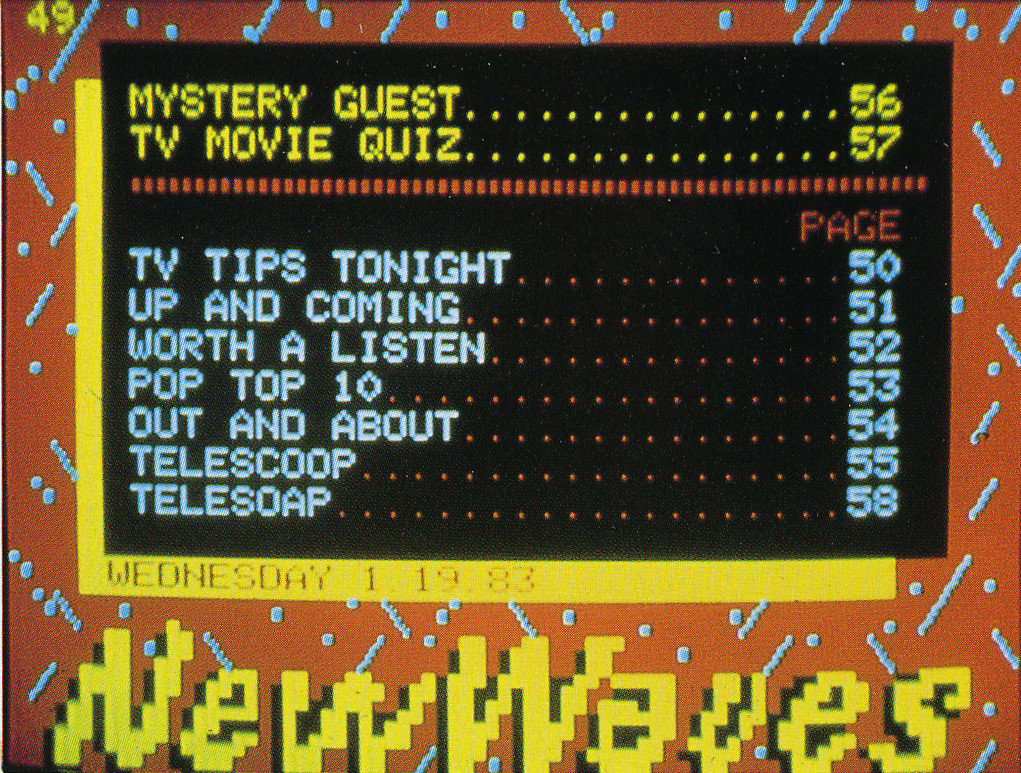
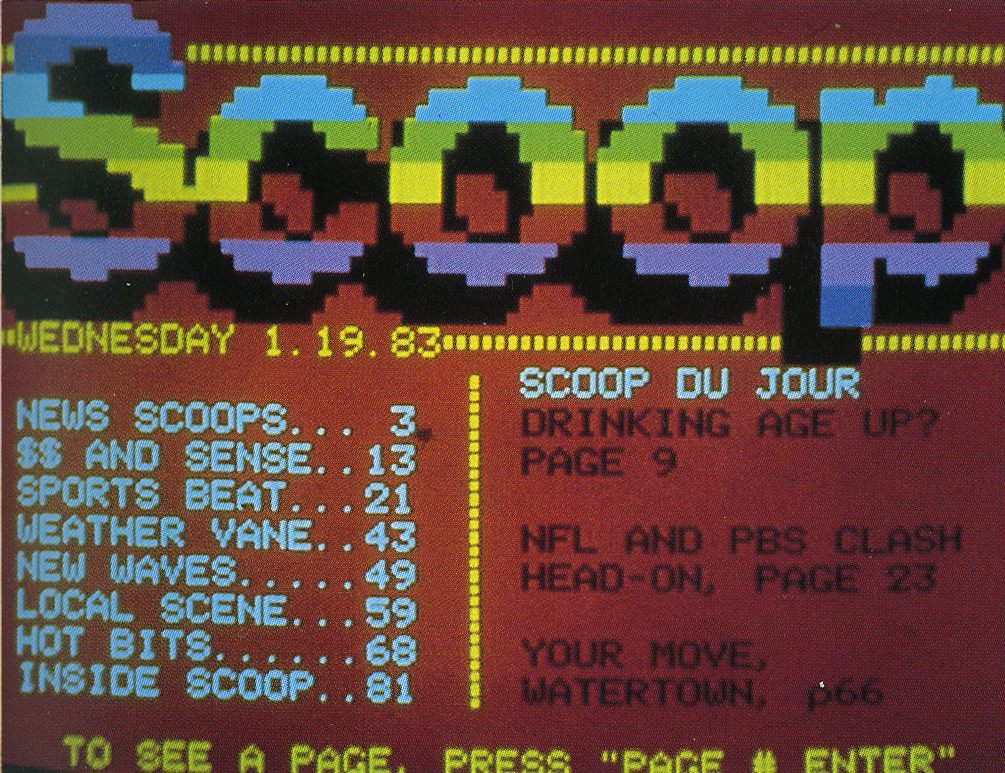
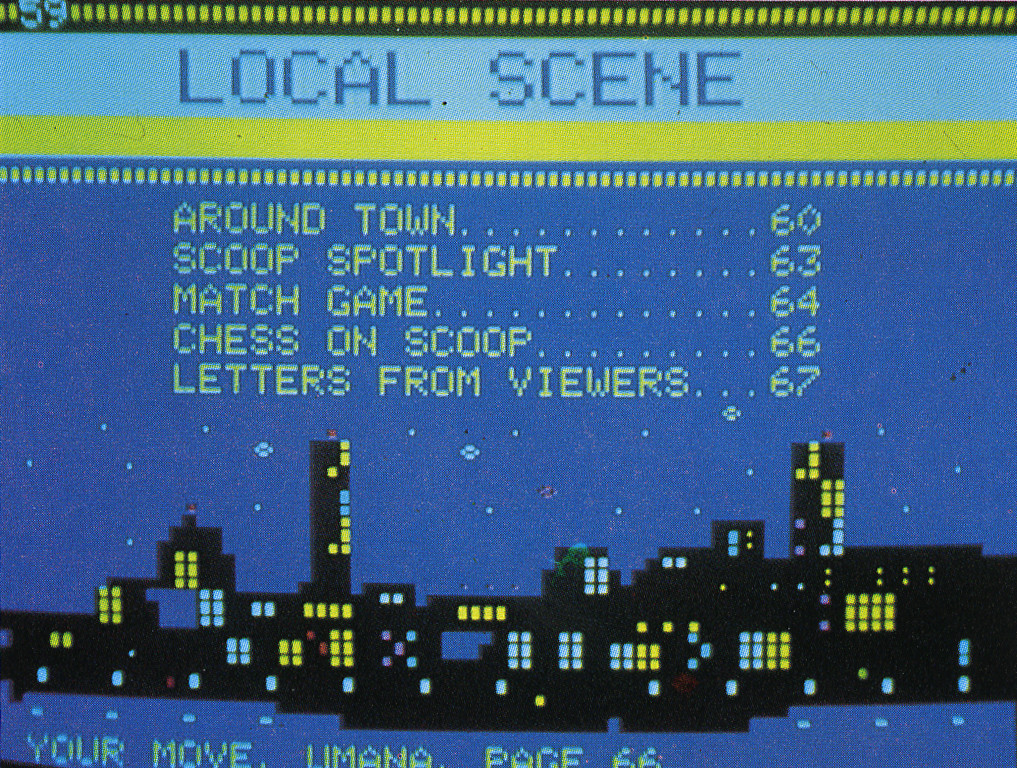
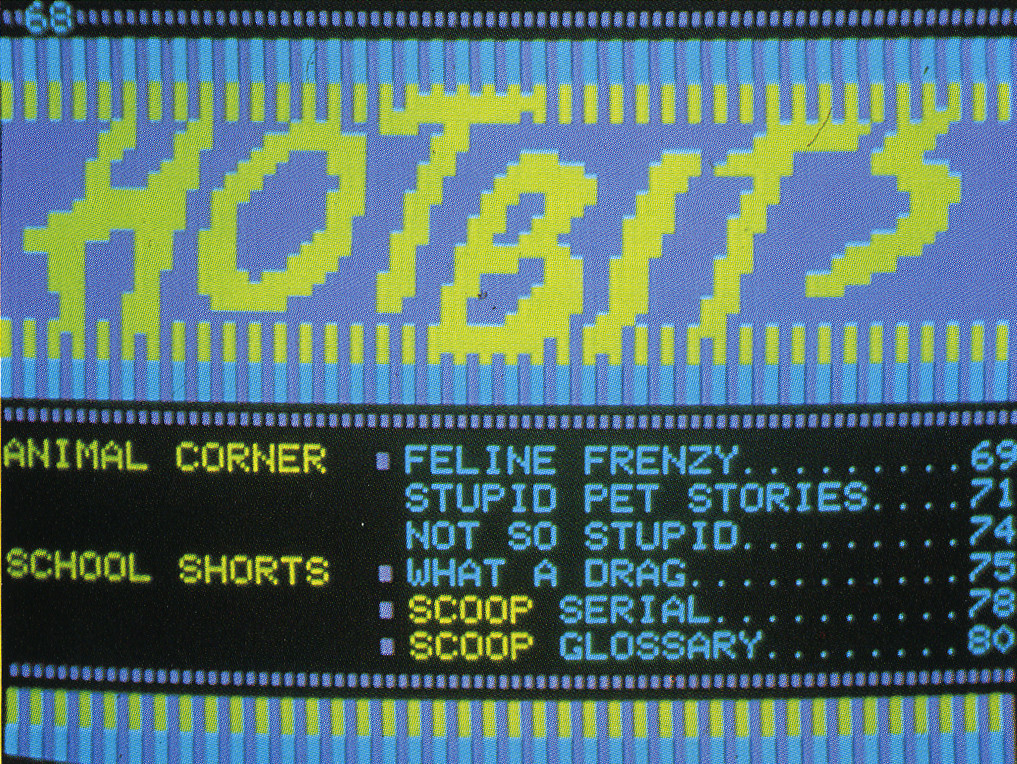
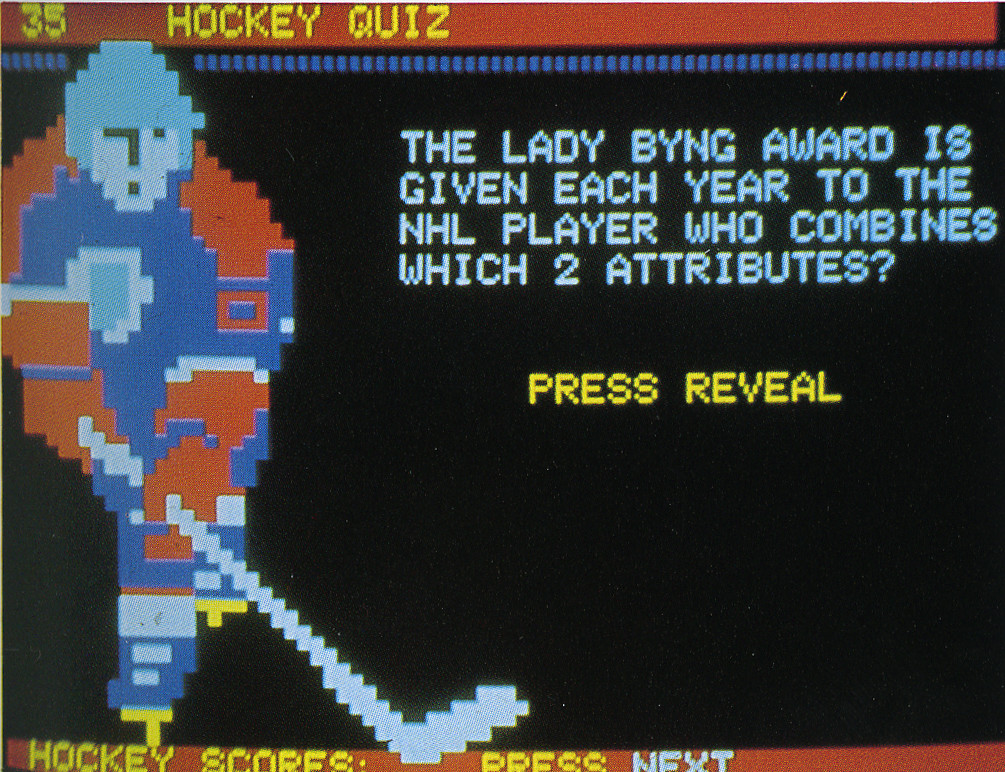
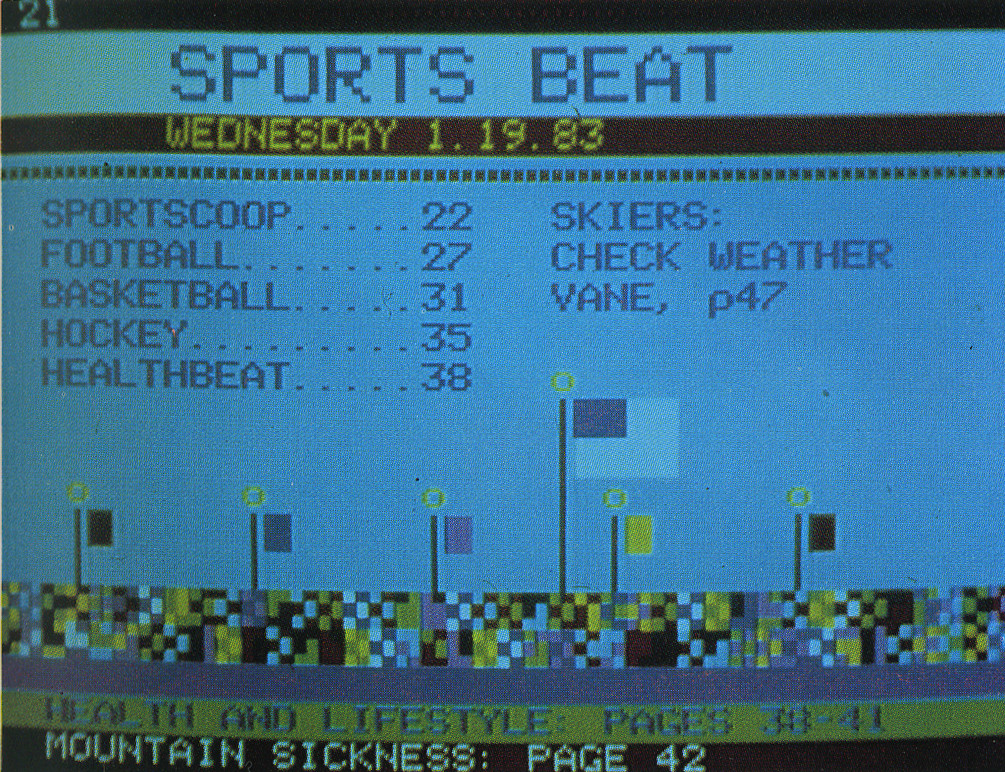
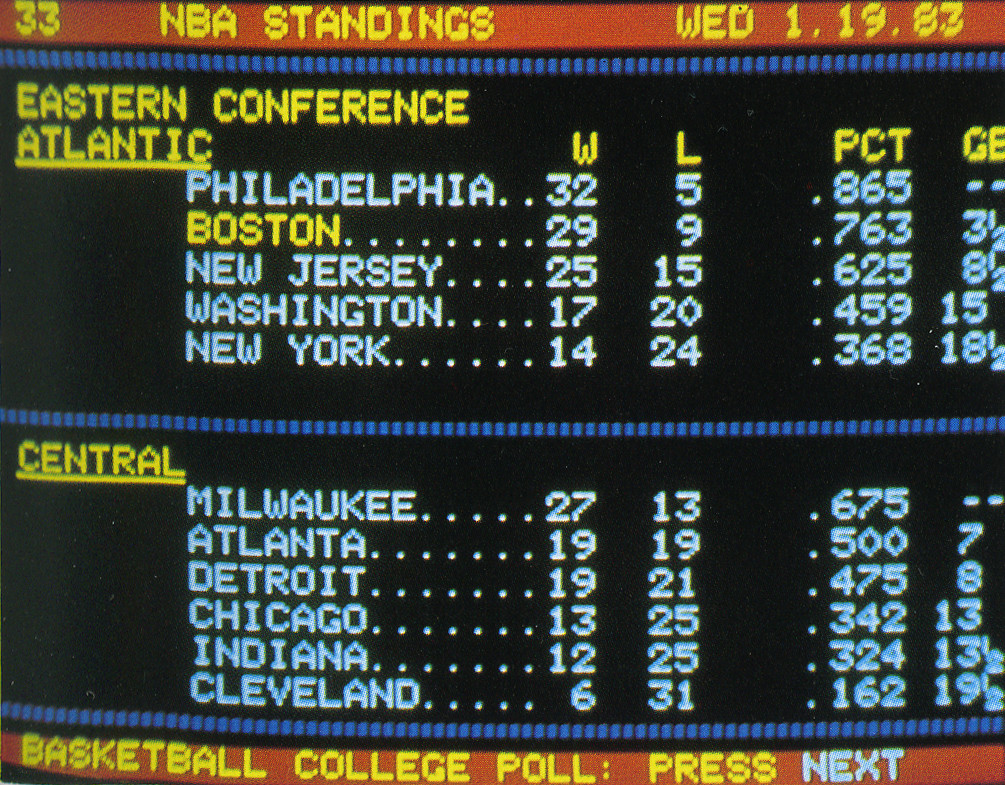
SCOOP was a teletext magazine for teenagers, available at ten high schools in USA, 1985. It was broadcasted on WGBH-TV in Boston using the NABTS/NAPLPS standards, which included the alpha-mosaic features of the French Antiope standard (see page 12).
“The kind of information presented (topical subjects, sports scores, around town information, etc.), the way it was presented (short, tightly edited segments), and the format (contemporary, graphic-heavy, easy to access) were appropriate to a teenage audience.”
More info in Formative Evaluation for Educational Technologies. Post updated in 2024.
Antiope (1976/1979) was the French competitor to the British teletext standard. Antiope used a higher data rate, dynamic page sizes, custom fonts, and generally more sophisticated graphics, although some of these features were introduced later in the 1980s.
According to the French, it was not as “crude and old fashioned” as British teletext. Nevertheless, the British won the the standardization war and proclaimed World System Teletext, while Antipoe was used for Teletel (better known as Minitel).
Some images from here.
Post updated in 2024.
An introduction to ABC80, the Swedish answer to the TRS-80. It was built by the government-owned Luxor, and had a textmode that supported monochrome teletext, like you can see in the video. As a bonus, here is a video of a guy browsing the web with the ABC80.

